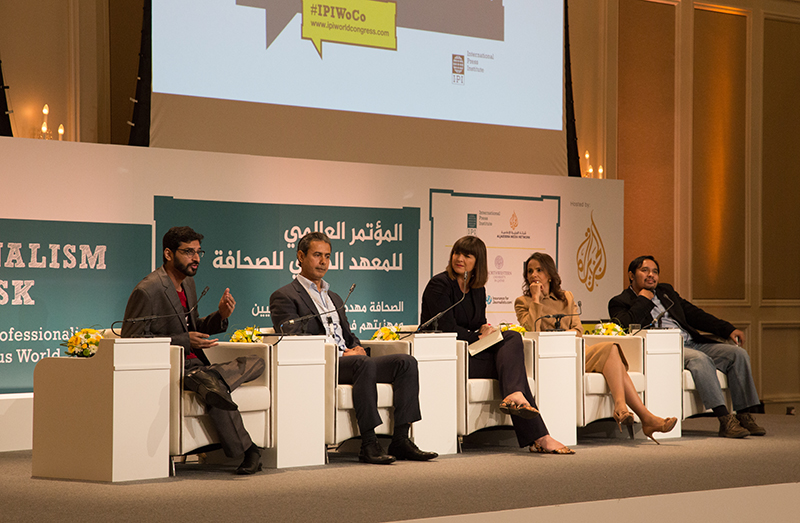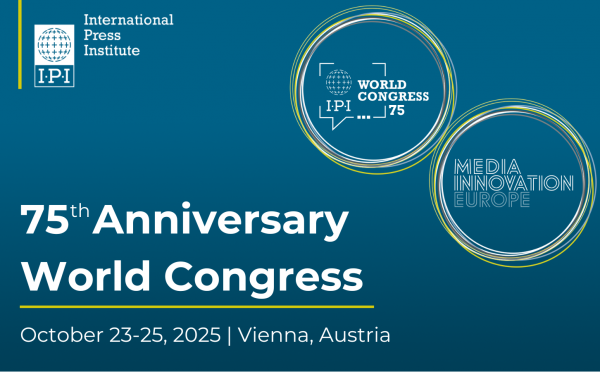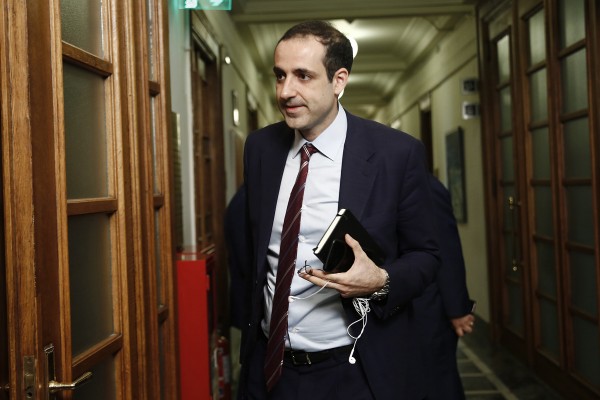The difference between an activist and a journalist is not a clear line, though it should be, Wahyu Dhyatmika, managing editor at Tempo.co, an Indonesian news website, said during Sunday morning’s International Press Institute (IPI) panel “How to Cover Violent Extremism and Survive”.
Focusing on the various responsibilities that journalists have while reporting in conflict and war zones, panellists agreed that activists can be very opinionated and biased in their reporting.
When a photo of a dead child is taken, Mariam Oubaiche, a senior journalist at the Al Jazeera Media Network in Qatar said, a journalist’s job is to report what has happened. However, she added, an activist might also incite hatred and insult the opposing side. Oubaiche referred to this as “adding weapons to the war”.
Jahanzaib Haque, editor and chief digital strategist at Dawn.com, Pakistan’s oldest media conglomerate, noted that in his country various political parties and extremist groups use social media to spread their message to a wide audience, who often assume the information to be true. In contrast, he said, journalists are often critical of such information.
Given the digital nature of his team at Dawn.com, Haque noted that verifying the truth and contextual information behind these sources is an achievable feat. However, he added, convincing the audience is difficult.
“The power of Twitter and Facebook is such that, no matter what we do as media groups, we really can’t tackle it,” Haque said, arguing that trying to convince millions of the truth can be very ineffective and a “losing battle”.
He also noted that Pakistani media is also very partisan, so the public’s trust is almost nonexistent. As a result, when news websites do try to publish the truth, they are viewed very critically, more so even than activists.
The panellists agreed that a fine line exists between citizen journalism and activism. With regard to extremism, citizen journalism often comes in the form of footage or information that citizens post from a conflict zone. News organizations can use this to contextualise the conflict, if they do not have their own reporters on the field and as long as they credit it.
Sue Turton, a freelance journalist who moderated the panel, said that using such footage is acceptable, as long as the journalist verifies it.
On the other hand, activists, the panellists noted, are not trained to be unbiased and likely have extremely one-sided views and opinions. Often, they lack training so they do not always know if they are posting the truth, Haque said.
Many of the panellists agreed that collaboration can be possible between activists and journalists. Activists may provide contextual information that the journalist may not have, Dhyatmika pointed out. However, Oubaiche emphasised that journalists should verify all information provided by an activist and edit it to ensure it is unbiased before it is published.



